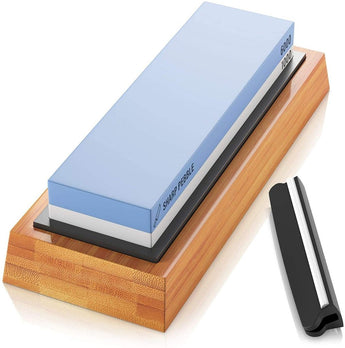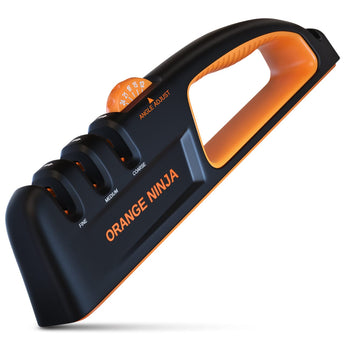It’s not just about having a high-quality knife, but how you use it that matters. Some people think that they need a different knife for each task. The truth is that they just need a different technique and one sharp knife.
How the knife is held or gripped is an important part of how it will cut. Different textures and thicknesses require different grips. The type of slice desired is another factor that determines which grip is best. Check out these 3 essential knife skills to keep your kitchen cuts clean!
Pinch Grip
This grip is the most useful. It works for most cuts and allows users to utilize the sharpness and weight of the knife as well as the strength of their hand. That makes it super efficient and well rounded. In fact, it is the grip professional chefs use most often. The pinch grip works for all types of cuts.
Pinch grip requires the knife user to pinch the blade between their thumb and index finger. The pressure is at a downward angle away from the blade and the fingers are a safe distance from the sharp edge. All remaining fingers grip the handle loosely while the other hand is used to steady whatever is being cut. This technique is referred to as the guide hand.
The Guide Hand
An efficient cut begins with a quality knife and a solid grip, but also needs clean slices. Providing a guide is a good way to get the knife to land where someone using it wants it every time. The non-cutting hand makes a reliable, constant guide. More experienced users can chop, slice and dice quickly and safely using the guide hand technique. The guide hand technique works for all types of cuts too.
For this technique to be performed safely the tips of the fingers being used should be curled away from the blade. The fingers being used as a guide need to be at a 90-degree angle to the blade. This provides a solid guide to place the knife in the right place for making the cut. The guide hand moves in sync with the knife and measures out even, perfectly portioned slices.
Push and Raised Knife Techniques
These techniques are the same style of cut, but slightly different based on the size of the item being cut. The raised knife cut is a push cut with a larger angle. Both are used for making small, quick cuts. It is widely used for chopping and dicing, but wouldn’t be ideal for long cuts or slices.
To push the knife into the item being cut, hold the handle firmly with the pinch grip, use your hand as a guide and keep one piece of the knife down the whole time. The knife is raised and then pushed forward and rocked down, slicing the item quickly. If the item is small, around one inch or less, it can be pushed beneath the knife while the knife is raised slightly. For larger items, the knife must be raised high and brought down at an angle, it cannot be rocked through the item as easily.
Let the food you’re preparing dictate the style of slicing you use. Whatever you choose, stay safe and practice doing it right before doing it fast. Another safety tip is to keep the blade sharp so the cuts are smooth and accurate.



